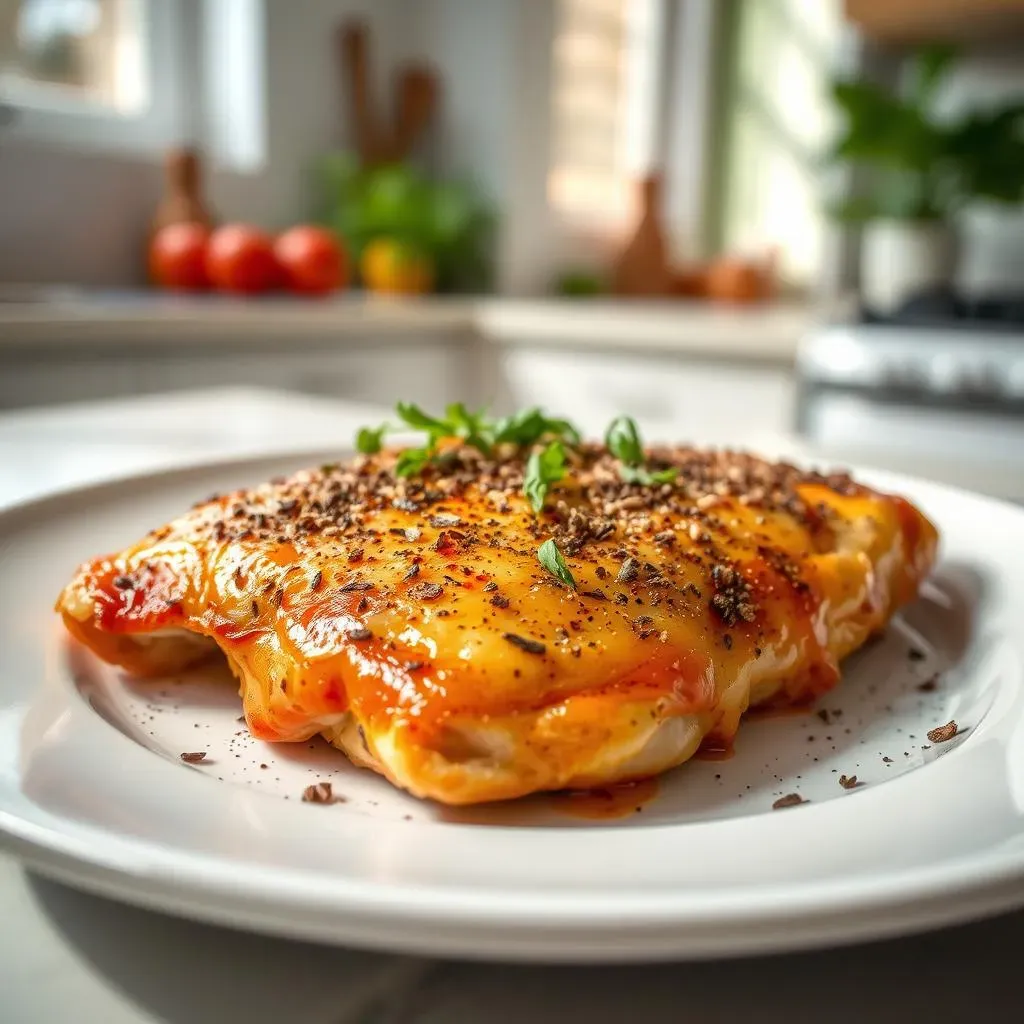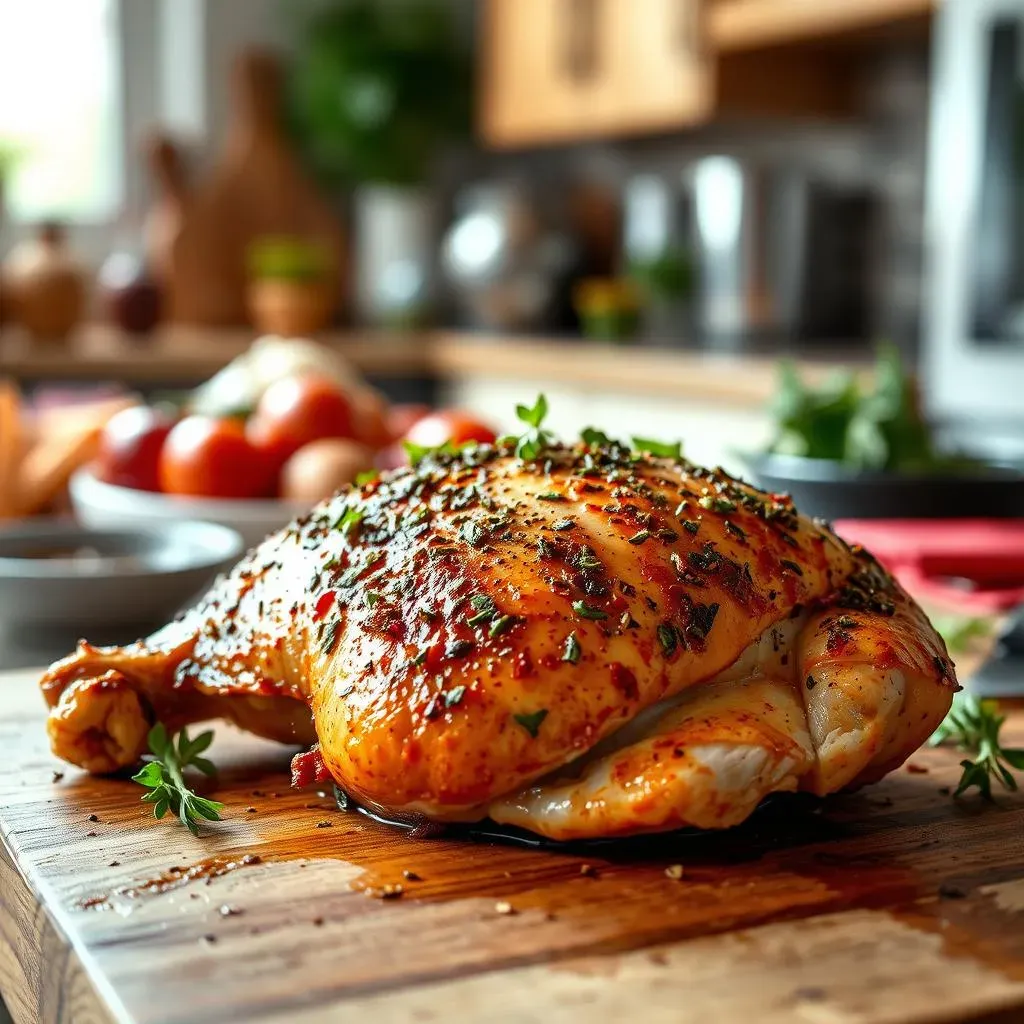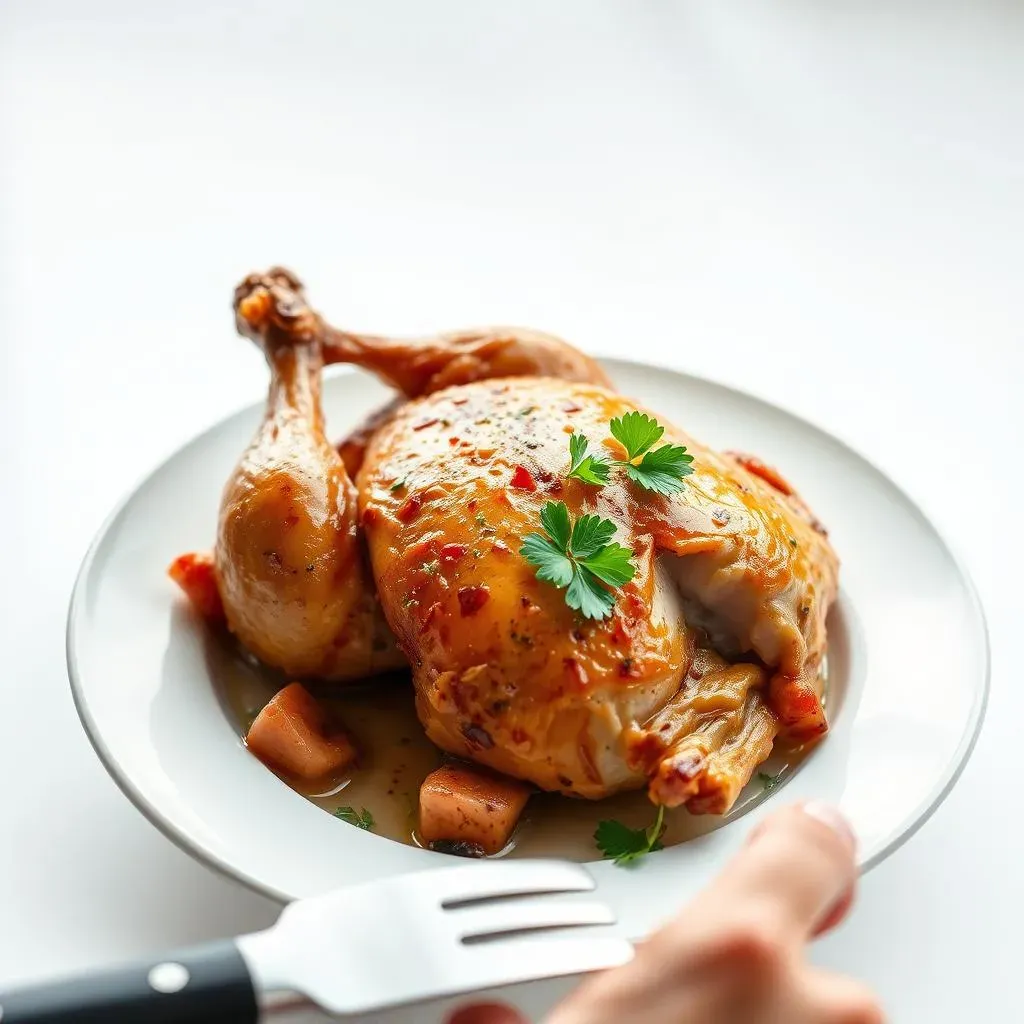Table of Contents
Tired of dry, flavorless chicken ruining your meal prep? I get it. We've all been there, staring at a container of sad, rubbery chicken, wondering where we went wrong. But what if I told you that juicy chicken meal prep is not only achievable, but also surprisingly easy? This isn't some culinary magic trick; it's about understanding a few simple techniques that will transform your chicken from bland to brilliant. In this article, we're ditching the dry and embracing the juicy. We'll walk through a straightforward recipe that requires minimal prep, explore pro tips to ensure your chicken stays moist and delicious, and tackle the best ways to store and reheat your protein so it's just as good on day five as it is on day one. Get ready to unlock the secrets to perfect juicy chicken meal prep, and say goodbye to those flavorless lunches.
Ingredients and Easy Instructions for Juicy Chicken Meal Prep

Ingredients and Easy Instructions for Juicy Chicken Meal Prep
Alright, let's get down to brass tacks. Making juicy chicken for meal prep isn't about fancy techniques or a million ingredients. It's about simplicity and a little bit of know-how. For this recipe, you'll need boneless, skinless chicken breasts – about two pounds should do the trick – because we're all about that lean protein. Then, it's all about the flavor: grab some smoked paprika, garlic powder, dried oregano, salt, and black pepper. That's our magical spice blend for this adventure. You'll also need a little bit of olive oil to make sure the spices stick to the chicken, like glue. Now, for the method: preheat your oven to 450°F (232°C). Seriously, 450 is the sweet spot for getting that juicy interior. While your oven is heating up, pat the chicken breasts completely dry with paper towels. This step is crucial because dry chicken is happy chicken. It’s a blank canvas ready for flavor!
Next, in a small bowl, mix together one teaspoon each of smoked paprika, garlic powder, and dried oregano, along with half a teaspoon each of salt and black pepper. Drizzle the chicken breasts with about a tablespoon of olive oil, then sprinkle that spice mixture all over, making sure every inch is covered. Then place the seasoned chicken in a baking dish, and bake uncovered for 20 minutes. After that, it's time to cover the baking dish with foil and let the chicken rest for 10 minutes. This resting period is where the magic happens – the juices redistribute, resulting in unbelievably tender chicken. The internal temperature should be 150°F (65°C), and it will continue to cook while it's resting. After resting, you're good to slice it up, and use it for your meal prep!
Ingredient | Quantity |
|---|---|
Boneless, Skinless Chicken Breasts | 2 pounds |
Smoked Paprika | 1 teaspoon |
Garlic Powder | 1 teaspoon |
Dried Oregano | 1 teaspoon |
Salt | 1/2 teaspoon |
Black Pepper | 1/2 teaspoon |
Olive Oil | 1 tablespoon |
Tips and Tricks for the Perfect Juicy Chicken Meal Prep

Tips and Tricks for the Perfect Juicy Chicken Meal Prep
Okay, so you've got the basic recipe down, but let's talk about taking things to the next level. It's not just about following the steps; it's about understanding why they work. First off, don't skip the patting-dry step. Seriously, I cannot stress this enough. Excess moisture is the enemy of a good sear and prevents those delicious spices from sticking properly. Think of it like trying to glue something to a wet surface, it just won’t work, right? Also, don’t overcrowd your baking dish. You want the heat to circulate around the chicken, and if they're too close together, they'll end up steaming instead of baking. That’s how you get dry, sad chicken. Give those breasts some breathing room, people. Another thing, invest in a good meat thermometer. Guessing when the chicken is done is a recipe for disaster. You want an internal temperature of 150°F (65°C), and remember, it will continue to cook while resting.
And speaking of resting, don’t even think about skipping that step. The resting period allows the juices to redistribute throughout the chicken, which is what makes it unbelievably tender and juicy. If you slice into it too soon, all those delicious juices will just run out onto your cutting board, and you’ll be left with a dry piece of chicken. Also, feel free to experiment with different spice combinations. While smoked paprika, garlic powder, and oregano are my go-to, don't be afraid to switch things up. Try adding a little cayenne pepper for a kick, or some onion powder for a different flavor profile. The most important thing is to find what you love. Finally, consider brining your chicken if you have a little extra time. A simple saltwater brine can do wonders for the moisture content and flavor of your chicken. It's like giving your chicken a spa day before its big baking debut.
Tip | Why It Works |
|---|---|
Pat Chicken Dry | Ensures spices stick and promotes searing |
Don't Overcrowd the Pan | Allows for even cooking and prevents steaming |
Use a Meat Thermometer | Ensures chicken is cooked to a safe and juicy temperature |
Rest the Chicken | Allows juices to redistribute for maximum tenderness |
Experiment with Spices | Adds variety and helps you find your favorite flavors |
Consider Brining | Enhances moisture and flavor |
Storing, Reheating, and FAQs About Juicy Chicken Meal Prep

Storing, Reheating, and FAQs About Juicy Chicken Meal Prep
Storing Your Juicy Chicken
Okay, so you've nailed the recipe, and your kitchen smells amazing. Now, how do we keep that juicy goodness for the rest of the week? First things first, let that chicken cool down completely before you even think about putting it in the fridge. Warm chicken in a container can create condensation, which can lead to soggy chicken, and nobody wants that. Once cooled, store your chicken in airtight containers. This prevents it from drying out and picking up any funky fridge odors. I like to portion it out into individual servings at this point, so I can grab and go during the week. If you’re not planning to use it within five days, freezing is your best bet. Wrap the chicken tightly in plastic wrap, then place it in a freezer bag. This double layer will help prevent freezer burn, and your chicken can last up to three months.
Reheating Your Chicken Without Drying It Out
Reheating can be tricky, and the last thing we want is to turn our beautifully cooked, juicy chicken into a dry, sad mess. The microwave is convenient, sure, but it’s also the enemy of moisture. If you must use it, try placing a damp paper towel over the chicken, this will help add a little moisture while reheating. My preferred method is steaming. Place the chicken in a pot or skillet with a splash of water or broth, cover it, and let it steam for a few minutes until it’s heated through. This gentle method keeps your chicken nice and juicy. You can also reheat it in a skillet with a little olive oil over low heat. Just be sure to flip it occasionally to ensure it heats evenly. Avoid reheating in the oven, as it tends to dry the chicken out too much.
Reheating Method | Pros | Cons |
|---|---|---|
Microwave | Quick and convenient | Can easily dry out chicken |
Steaming | Gentle, retains moisture | Takes slightly longer |
Skillet | Even heating, good flavor | Requires more attention |
Oven | Easy to cook multiple portions | Likely to dry out the chicken |
Frequently Asked Questions
Alright, let’s tackle some common questions I always get about juicy chicken meal prep. First, “Can I use different cuts of chicken?” Absolutely! While this recipe is written for breasts, you can use thighs or tenderloins. Just keep in mind that cooking times may vary. Thighs, for example, can handle a little more heat and won't dry out as easily, so you can cook them a bit longer. Next up, “Can I add veggies to the pan while baking the chicken?” Sure, but be mindful of cooking times. Hearty veggies like carrots and potatoes can be added with the chicken, but more delicate ones like broccoli or zucchini should be added halfway through, or they’ll turn to mush. And lastly, “How long does the chicken last in the fridge?” Generally, cooked chicken is good for about 3-5 days in the refrigerator. If you’re unsure, always err on the side of caution. If it smells off, toss it out. Nobody likes food poisoning!
"The best way to predict your future is to create it." - Abraham Lincoln